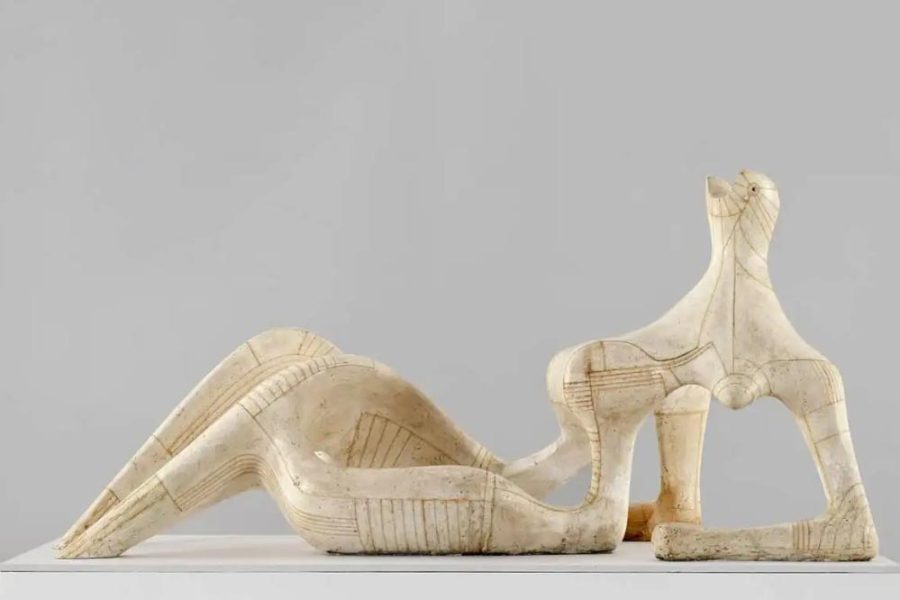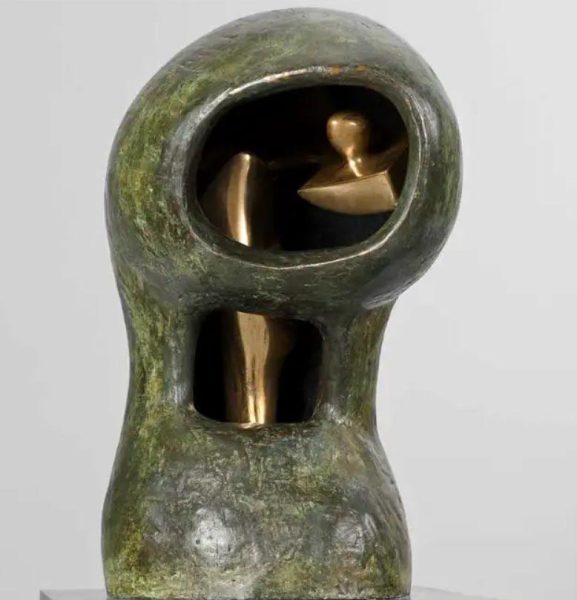In the pantheon of great British artists, the name Henry Moore stands tall, an indomitable figure whose influence remains undiminished 125 years after his birth. This year marks a special milestone, a moment to reflect on the life and legacy of a man whose sculptures have become iconic landmarks across the globe
A HUMBLE BEGINNING: CASTLEFORD BORN
Born in the West Yorkshire town of Castleford in 1898, Moore’s early life gave little hint of the artistic titan he would become. The seventh of eight children, his family was of modest means, with his father working as a miner. Yet, it was these humble beginnings that shaped Moore’s understanding of the human form, with its enduring strength and fragility.

WAR AND ART: THE FORMATIVE YEARS
Moore’s journey into the world of art began at Leeds School of Art. However, the outbreak of World War I interrupted his studies. Serving in the Civil Service Rifles regiment, he witnessed the harrowing realities of war, which undoubtedly influenced his later works. After the war, he resumed his studies, thanks to an ex-serviceman’s grant, and later secured a scholarship to the Royal College of Art in London.

A DISTINCTIVE VOICE: THE EMERGENCE OF A MASTER
By the 1930s, Moore had begun to establish himself as a leading figure in the world of modernist sculpture. His work was distinct, drawing from natural forms, yet abstracted to capture the essence of the subject. The human figure, particularly the mother and child theme and the reclining figure, became central motifs. His pieces evoked a sense of timelessness, merging the ancient with the modern.

THE WAR YEARS: SHELTER DRAWINGS AND HUMANITY
World War II saw Moore take a slight detour from his beloved sculpture. With Londoners seeking refuge in underground stations during air raids, Moore was moved by the sight. These scenes culminated in his ‘Shelter Drawings’, a poignant reflection of humanity amidst the chaos. They were a departure from his sculptures but bore the unmistakable stamp of Moore’s sensitivity and insight.
GLOBAL RECOGNITION: FROM BRITAIN TO THE WORLD
Post-war, Moore’s reputation soared. Exhibitions in Europe, North America, and beyond cemented his status as one of the leading sculptors of the 20th century. Commissions flowed in, and his monumental outdoor pieces began gracing public spaces, from London’s Kenwood House to UNESCO’s Paris headquarters.



LEGACY: THE LASTING IMPACT OF MOORE
Today, 125 years since his birth, Moore’s legacy remains undiminished. The Henry Moore Foundation, established in 1977, ensures that future generations can engage with and be inspired by his work. His pieces, a fusion of abstraction and reality, continue to evoke strong reactions, bridging the gap between the past and the present, the tangible and the ethereal. The life of Henry Moore is a testament to the enduring power of art, a beacon that reminds us of humanity’s capacity for creativity and innovation. As we commemorate the 125th anniversary of his birth, we are reminded once again of the timeless nature of his work and of the man behind the masterpiece.